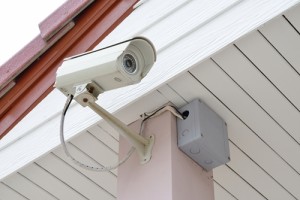Top 10 trends in video surveillance in 2016 (Part 1 of 2)
May 03, 2016
 The video surveillance market is growing rapidly, with more organizations in a wide variety of industries looking to such solutions to better oversee assets and protect people. A late 2015 report from TechNavio predicted that the video surveillance market globally would likely grow at a compound annual rate of more than 22 percent between 2016 and 2020.
The video surveillance market is growing rapidly, with more organizations in a wide variety of industries looking to such solutions to better oversee assets and protect people. A late 2015 report from TechNavio predicted that the video surveillance market globally would likely grow at a compound annual rate of more than 22 percent between 2016 and 2020.
To better understand the reasons behind this expected growth in video surveillance and to learn what organizations need from their solutions, IFSEC Global surveyed hundreds of security professionals located in many different countries. Based on that report, IFSEC Global was able to identify 10 key trends in the video surveillance space today:
1) Proper and consistent lighting remains a significant hurdle
The more things change, the more things stay the same. Proof of this old idiom was found in the IFSEC Global report, which found that some of the top concerns of video surveillance professionals have not changed much in the past few years. In particular, the ability to effectively see footage remains a problem for many in this space.
Among those surveyed, 71 percent of them said that they often need to use their solution in areas with dim or no lighting. Perhaps this is why 55 percent of respondents put nighttime lighting among their top five video surveillance features. According to the report, most video surveillance professionals would take nighttime lighting over cloud storage, optical zoom and pan-tilt-zoom controls.
While there are many new technologies available to security personnel today, at the end of the day they just need their video surveillance system to work well. Unless cameras are in well-lit locations, new tools like 4K resolution and video analytics will not be very helpful.
2) Data security concerns becoming more prominent
In many ways, physical security and cybersecurity used to be two very different arenas. However, the report found that this line is beginning to blur, especially as more video surveillance systems use IP equipment or otherwise store data on Internet-connected machines. As such, cybersecurity concerns are shared by those in the physical security space now.
Close to 40 percent of people polled by IFSEC Global said that their "confidential data is at high risk." In particular, over half of those surveyed that were in finance or IT said data breaches were a big concern, while it was found to be a significant worry among other industry verticals as well. As IP becomes more central to physical security operations, the concerns of the IP space are beginning to bleed into video surveillance and physical security.
3) Terrorism a main driver of video installs
It should come as no surprise that fears surrounding terrorism are driving more organizations to install and upgrade video surveillance. This may especially be the case in Europe, as the IFSEC Global report specifically cited the attacks in Paris and Brussels over the past nine months.
Approximately 32 percent of those polled said that terrorism was a "substantial" threat to their operations. The analysts at IHS Technology also noted that "heightened concern over public safety" was one of its eight top video surveillance trends of 2016.
4) Remote video access the next big thing in surveillance
While certain legacy concerns and demands remain front of mind for many video surveillance professionals, they nevertheless are looking to future technologies for help. In particular, 64 percent of those surveyed by IFSEC Global said that remote access to video was one of their top five most important security features, making it the most sought-after feature available. As mobile devices become more commonplace among security pros, they want to be able to view video from their chosen handheld hardware.
For organizations seeking remote access capabilities, the Firetide Mobility Controller is a great option. Not only is it designed to be seamlessly integrated into an existing Firetide network, but the Mobility Controller is capable of streaming video footage into laptops located in fast-moving vehicles. For law enforcement personnel in particular, this is an especially useful feature.
These are far from the only key video surveillance trends identified by IFSEC Global. For more insights on where the market is headed during the next few months of 2016, be sure to check out part two of this two-part series.

